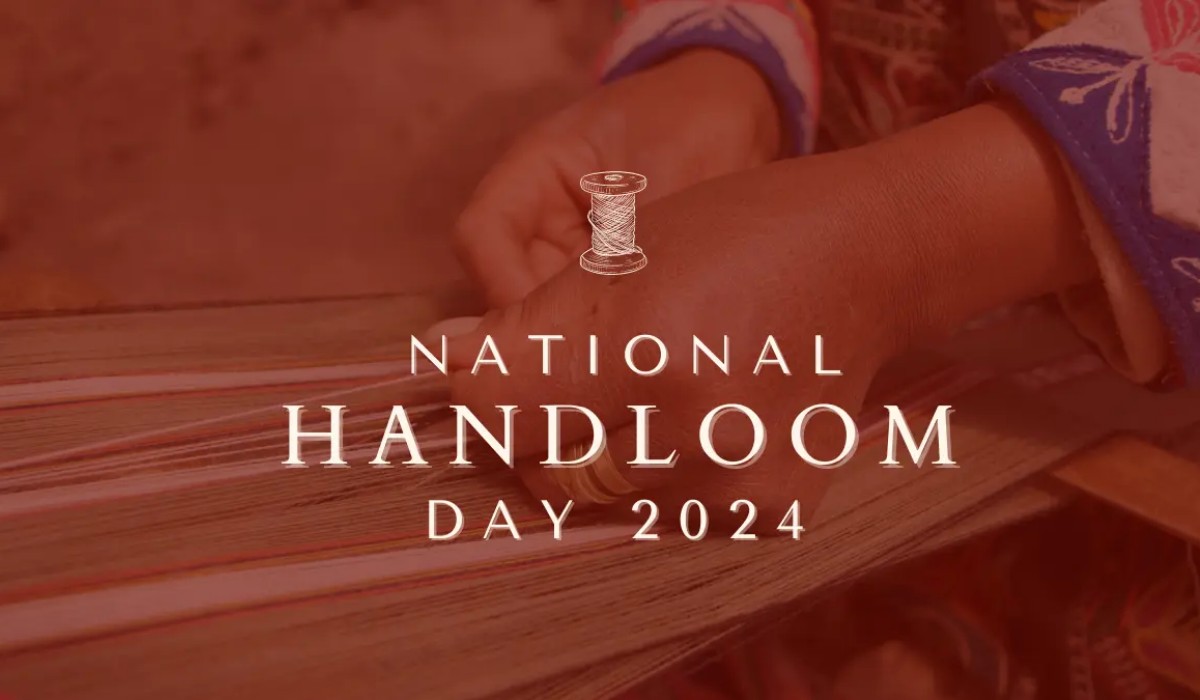On August 7th, India proudly commemorates National Handloom Day, a day dedicated to celebrating the rich tradition and artistry of handloom weaving that has been an integral part of the country’s cultural heritage for centuries. This special day not only highlights the craftsmanship of skilled weavers across the nation but also acknowledges the significant role handloom plays in sustaining rural economies and preserving traditional art forms.
A Timeless Tradition
Handloom weaving in India is more than just a craft; it is a tradition passed down through generations, embodying the spirit and creativity of countless artisans. From the intricate brocades of Varanasi to the vibrant ikats of Andhra Pradesh, each handloom fabric tells a unique story. The artistry involved in handloom weaving is a testament to the rich cultural tapestry of India, with every region offering its distinct styles, patterns, and techniques.
The history of handloom weaving in India dates back thousands of years, with evidence of its practice found in ancient texts and artifacts. The skill and precision required in handloom weaving have been honed over millennia, resulting in a diverse array of textiles that continue to captivate and inspire.
Also Read: Vinesh Phogat becomes first Indian woman wrestler to enter Olympics final
Economic and Social Impact
National Handloom Day serves as a reminder of the economic and social importance of the handloom sector. The industry provides livelihood to millions of weavers and artisans, primarily in rural areas, where handloom weaving remains a vital source of income. By supporting handloom products, consumers contribute to the preservation of traditional craftsmanship and the economic stability of these communities.
In addition to its economic benefits, the handloom sector also promotes sustainable practices. Handloom weaving, being a low-impact process, uses fewer resources compared to mechanized textile production, making it an eco-friendly choice for environmentally conscious consumers.
Crafting a Sustainable Future
The celebration of National Handloom Day is also an opportunity to address the challenges faced by the handloom industry. Despite its rich heritage and cultural significance, the sector struggles with issues such as the lack of modern infrastructure, competition from power looms, and limited access to markets. Efforts are being made to address these challenges through various government initiatives and support programs aimed at improving the livelihoods of handloom weavers and promoting their products.
The “Handloom Mark” initiative, for instance, is a government-led effort to promote authentic handloom products and protect the interests of weavers. By ensuring that consumers can distinguish genuine handloom fabrics from imitations, this initiative helps to preserve the integrity and value of handloom textiles.
A Celebration of Craftsmanship
On this National Handloom Day, we celebrate the remarkable skill and creativity of India’s handloom weavers. Their dedication to preserving traditional techniques and creating beautiful textiles is a source of national pride. As consumers, we can honor their legacy by supporting handloom products, whether through purchasing them directly or advocating for their inclusion in modern fashion.
From elegant sarees and intricate shawls to contemporary fashion pieces, handloom textiles continue to make a mark in the world of fashion. They represent not just a fabric but a piece of India’s cultural heritage and a symbol of its rich artistic traditions.
So, as we mark National Handloom Day, let us appreciate the craftsmanship, support the artisans, and embrace the timeless elegance of handloom textiles.
Also Read: Unpacking the Reasons Behind Bangladesh’s Protests Against Sheikh Hasina











